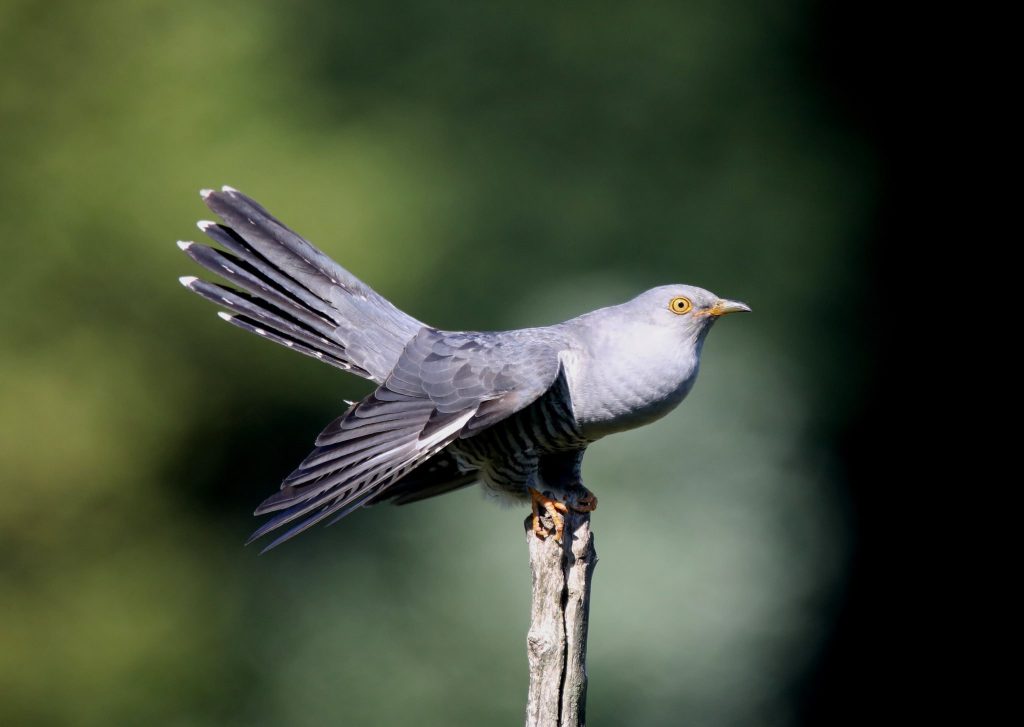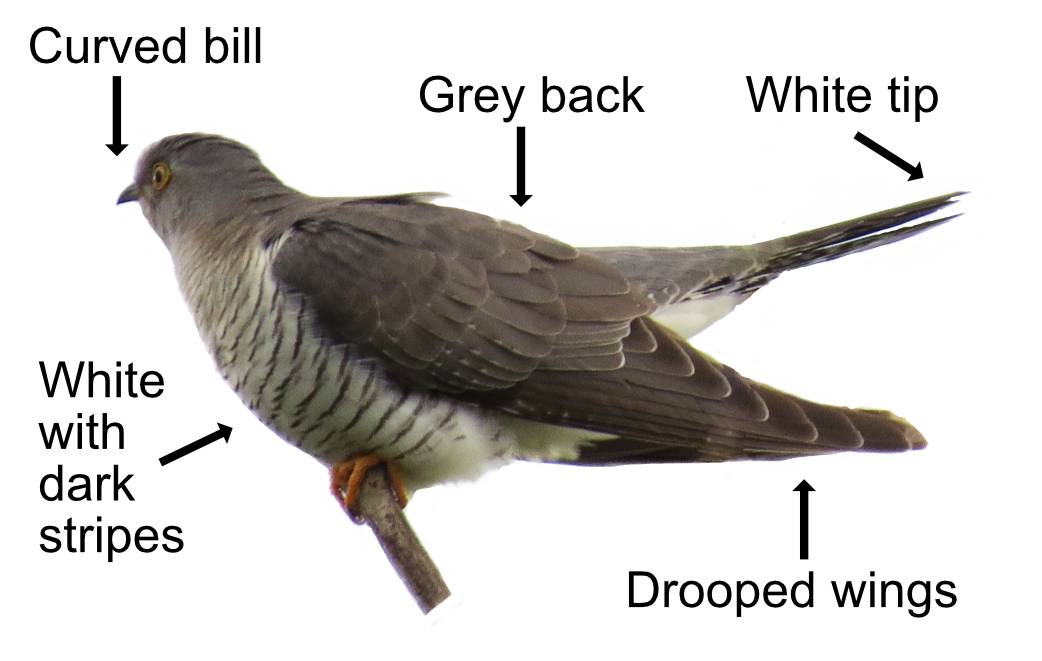
We generally welcome the Cuckoo's call as a sign of spring, though I am not sure many little birds are quite as happy about their arrival. They are summer visitors and well-known brood parasites; the females laying their eggs in the nests of other birds, especially Meadow Pipits, Dunnocks and Reed Warblers. Unsurprisingly, Cuckoos are mainly found in the areas where these little birds live: reed beds, moorland, woodland and farmland, and not in built-up city centres. When not here, they hang out in the African forests discussing their dastardly deeds.
The Cuckoo is the size of a pigeon and can look a bit like a Sparrowhawk when flying as it has similar stripes. The upper parts, head and breast are plain blue grey. The under parts are white with black barring. The bill is short and curved. The tail is rounded with a white tip and they hold the wings 'drooped' when perched. The Cuckoo is named after its call, which sounds "Cuck-coo" and is intended to ring out over vast distances. It's sometimes referred to as a stud-post call. It is the male Cuckoo imploring a female to seek him out for a bit of fun at the expense of others.
Cuckoos feed mainly on insects, especially hairy caterpillars which other birds avoid as they taste horrid.

The female Cuckoo finds a victim's nest and, when they are not looking, takes out one of their eggs and puts her own in its place. The female Cuckoo needs secrecy for this to succeed, because if the victim sees her at the nest they become suspicious and closely check their eggs. She glides down to the nest from a hidden lookout perch, removes an egg, lays her own in its place, and is off – all within 10-seconds! Cuckoos can lay eggs that look just like those being replaced, which is a very neat trick. They lay up to 25 eggs in a season which is a lot of poor victims. As she departs, she often gives a chuckle call, as if in triumph. This is perhaps the best trick of all. The chuckle is similar to the rapid call notes of a Sparrowhawk, and it diverts the victim's attention away from noticing that an egg has been swapped.
The young Cuckoo hatches after 12 days and instinctively pushes all the other young and eggs out of the nest so only it is left to be fed. It leaves the nest after 19 days and demands to be fed for a further 3 weeks before making its way back to Africa.
About 15,000 pairs visit Britain from April to August. They are widespread but thinly scattered. The Cuckoo is declining partly due to difficulties on their migration route and partly due to the lack of caterpillars caused by changes in agriculture. They are incredible travellers. A young Cuckoo, having been raised on its own in the nest of another bird, will find its way unaided back to central Africa. Most Cuckoos leave us in July and initially fly across to Southern Europe. They then feed up before the next step of their journey, a gruelling 3,000km (1,875 miles) crossing of the Mediterranean and the Sahara. A lot don't make it. Their population decline has made them a Red List species.
Their Latin name is 'cuculus canorus' where 'cuculus' is Latin for 'cuckoo' and 'canorus' means 'to sing'. Calculating conman would be better. From cuckoo, we get 'cuckold' which is someone tricked into bringing up a child that is not their own.